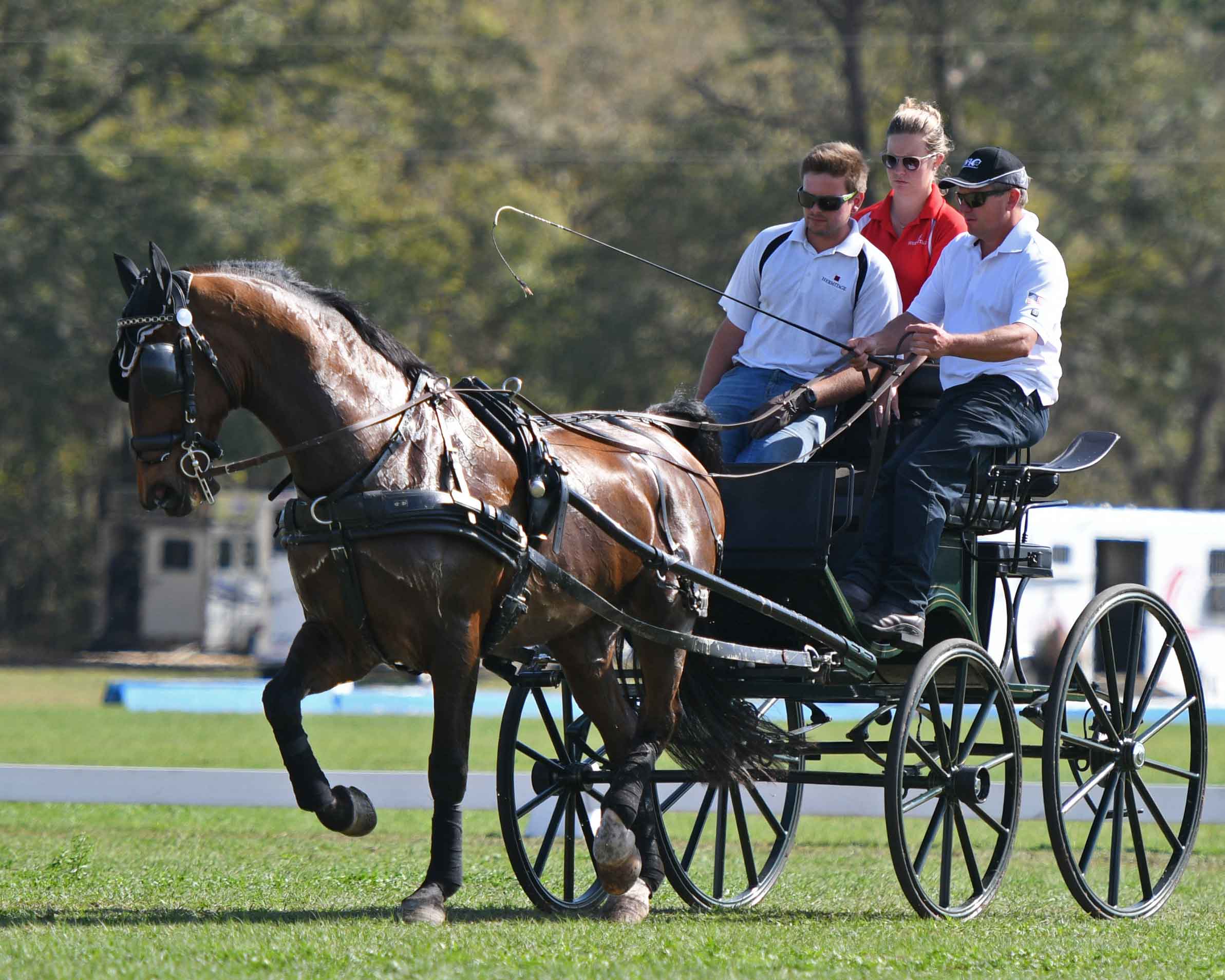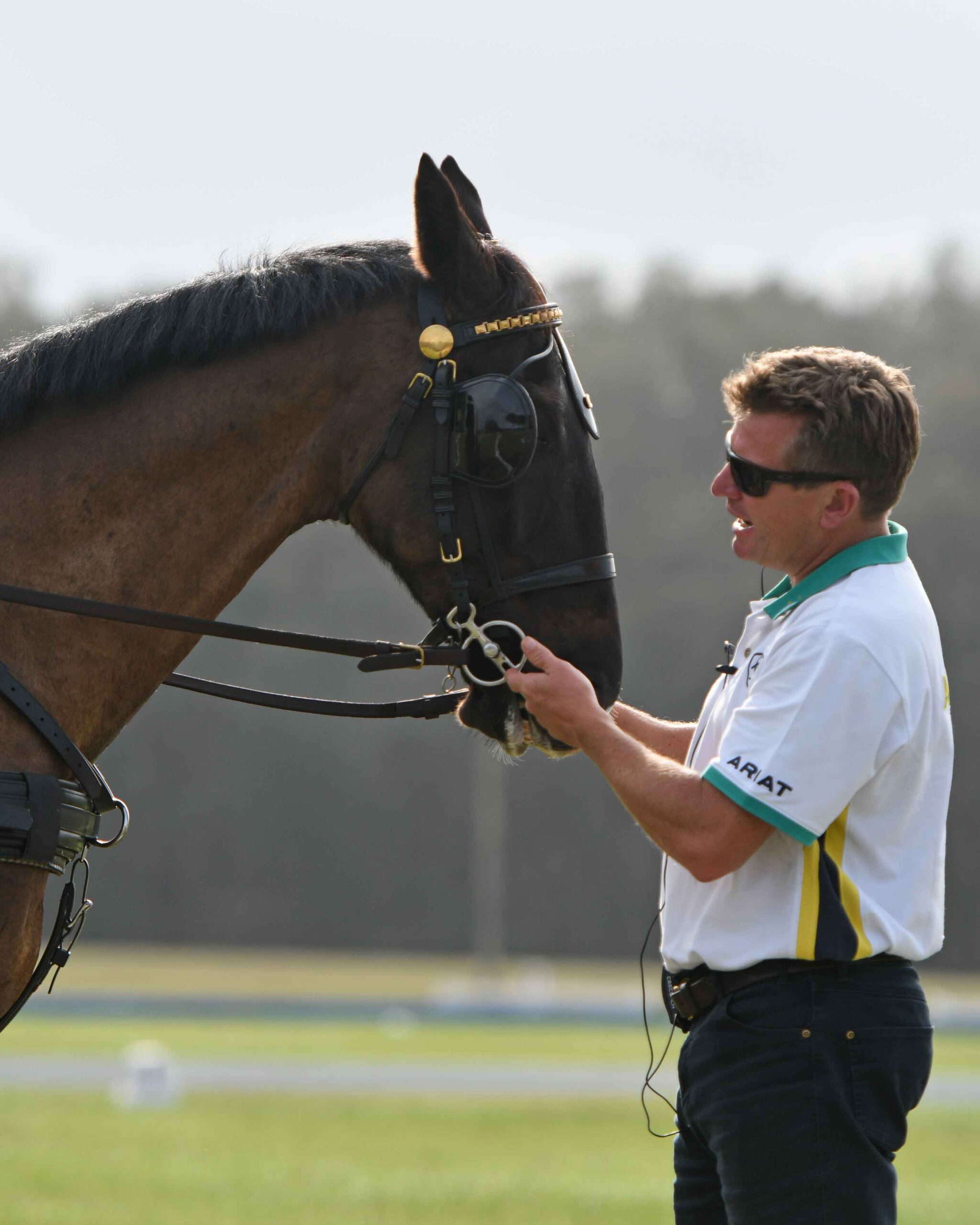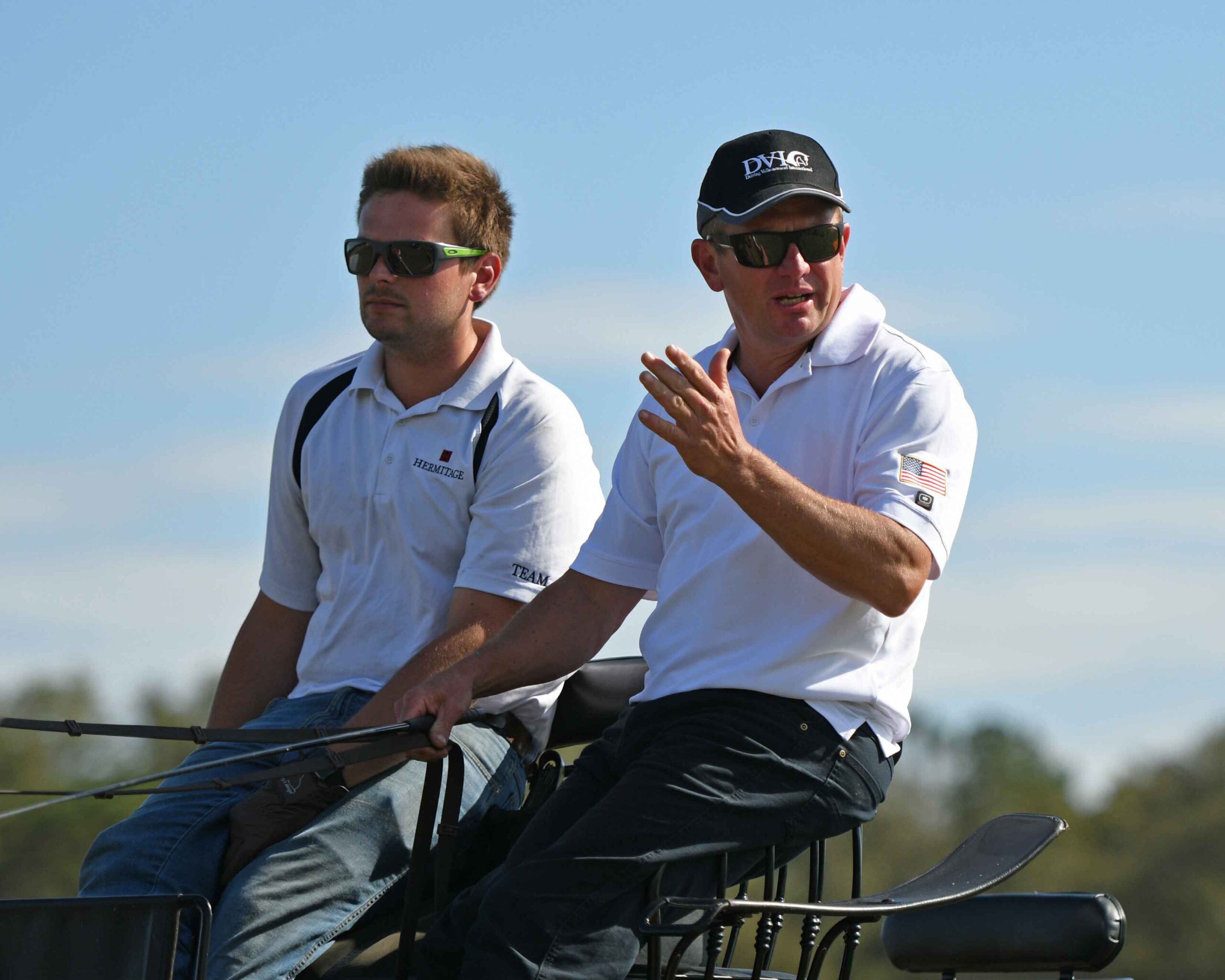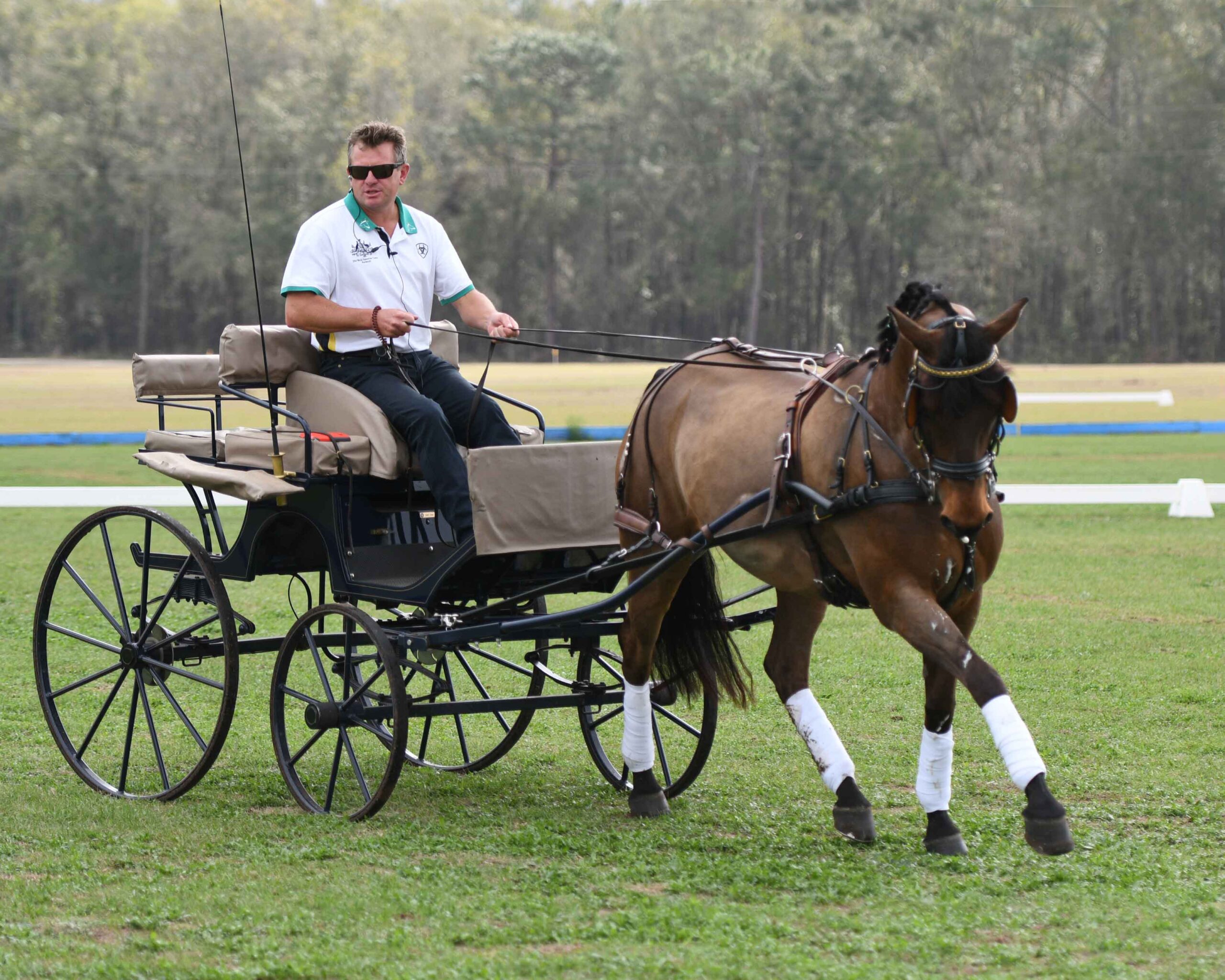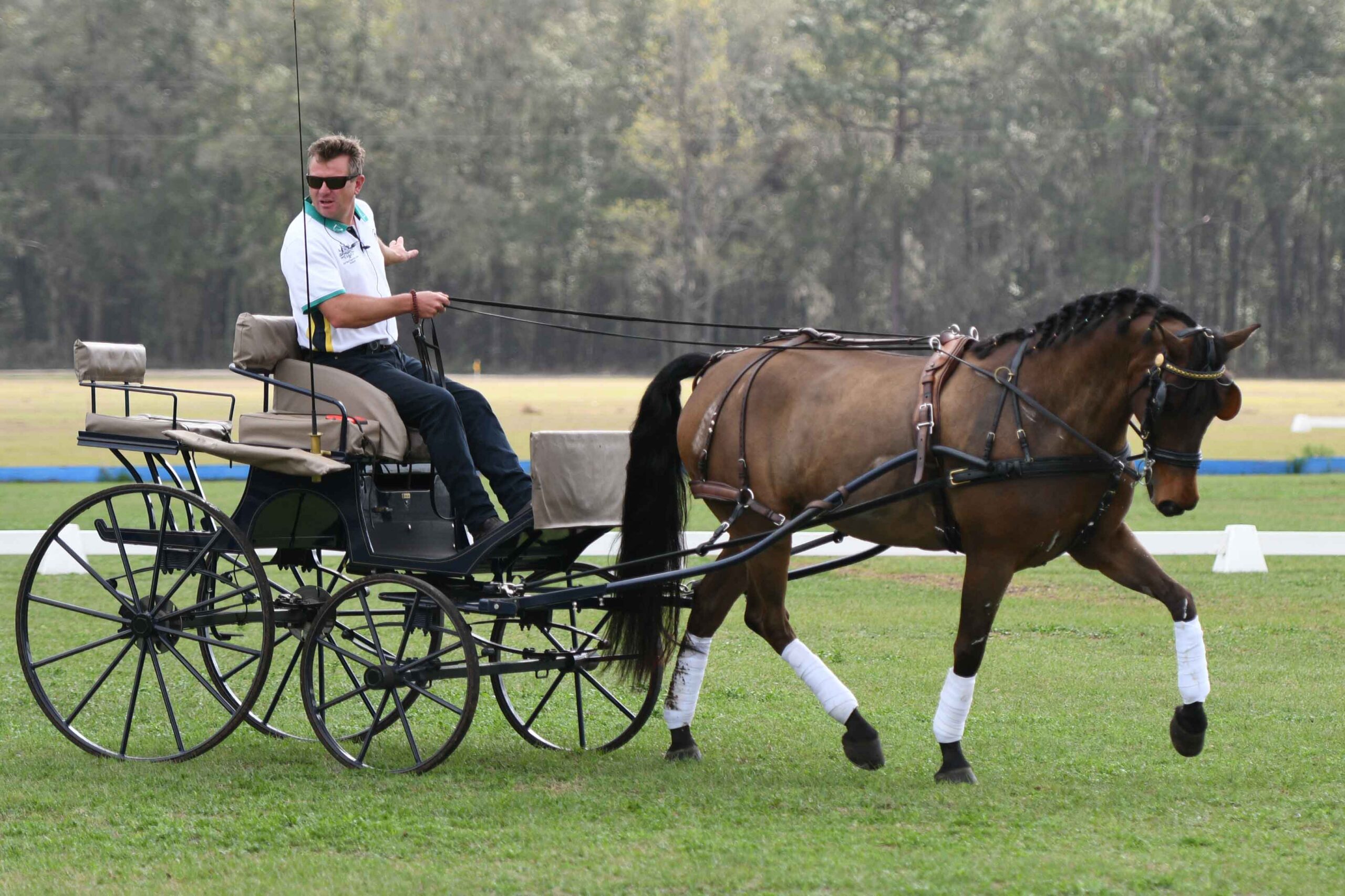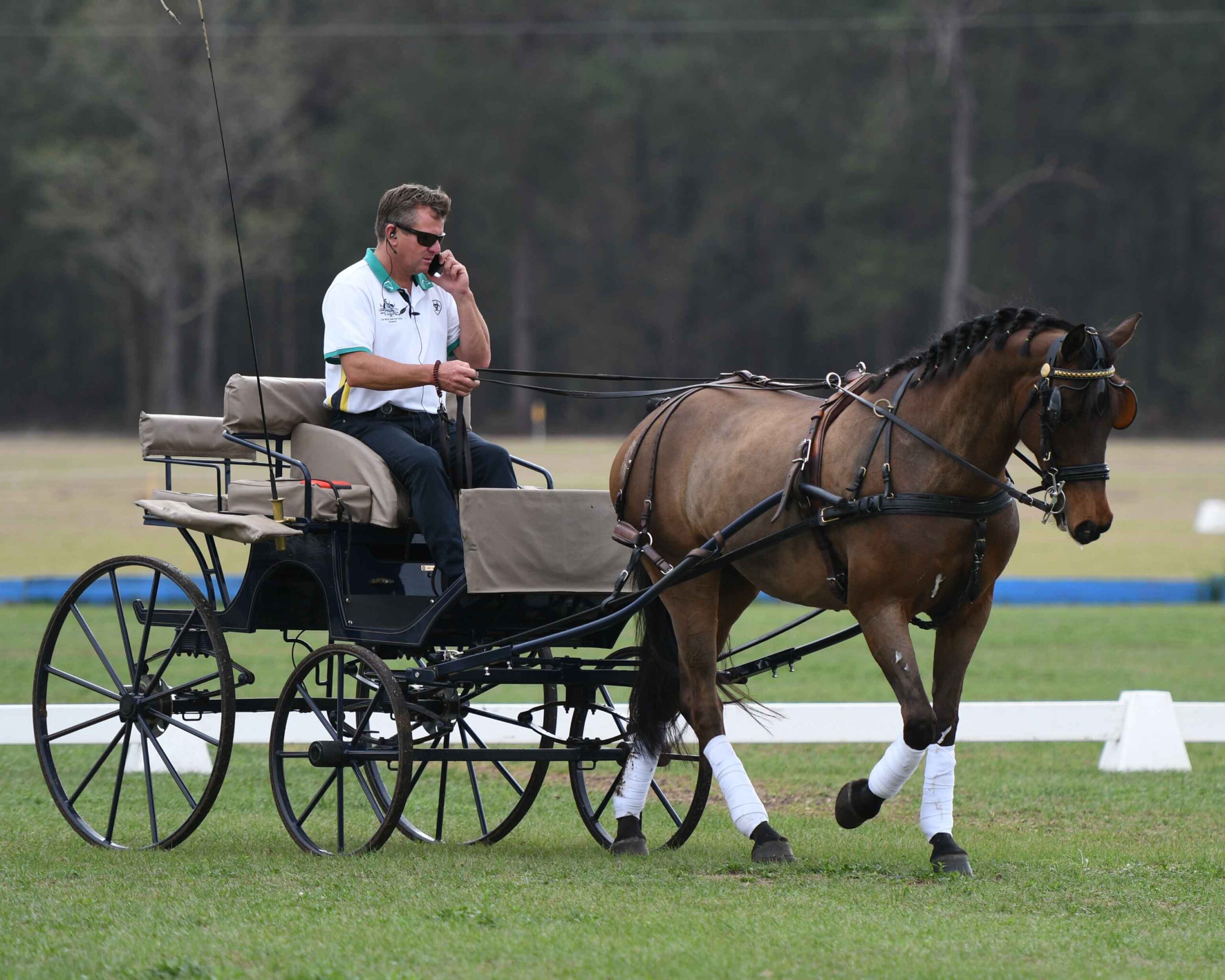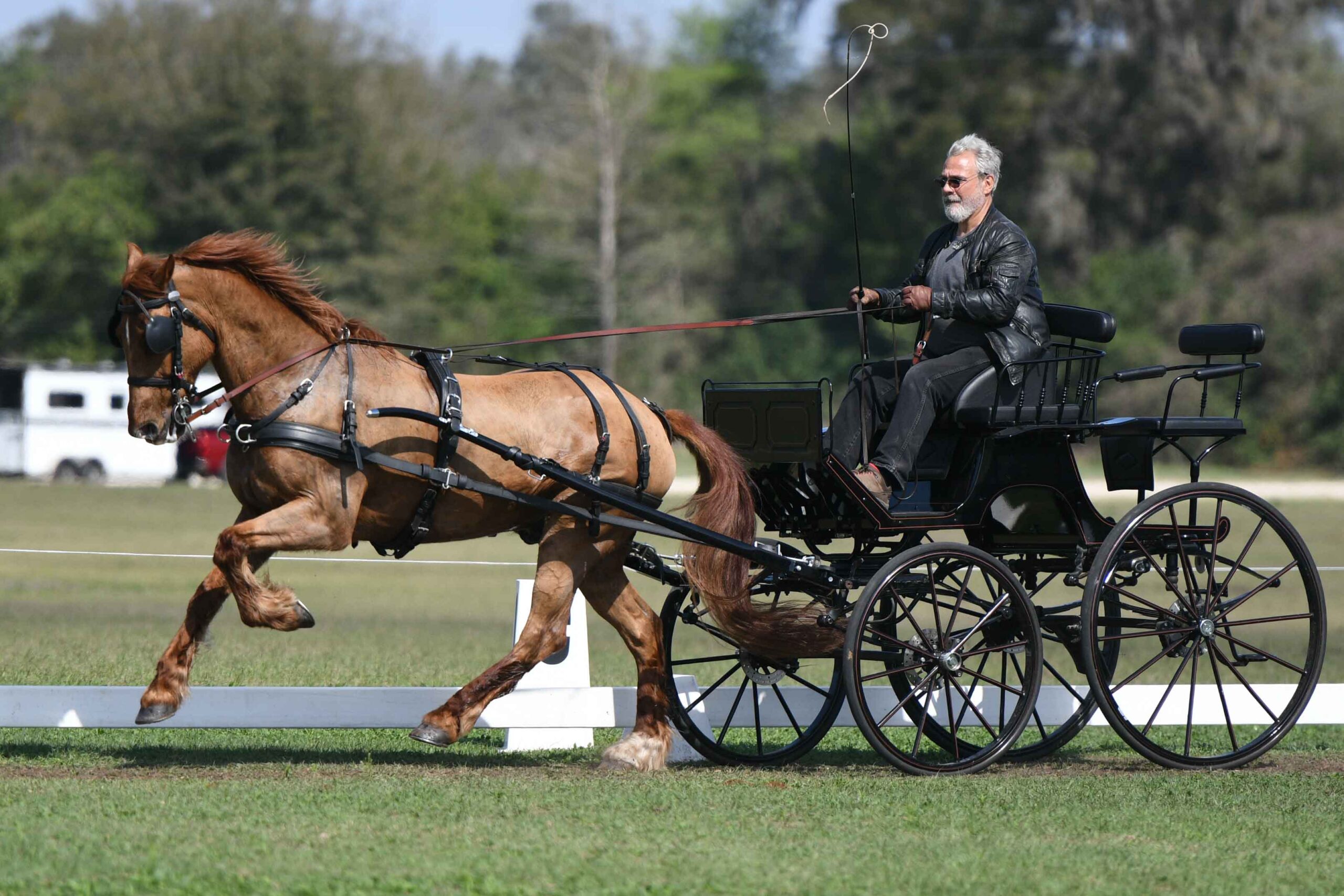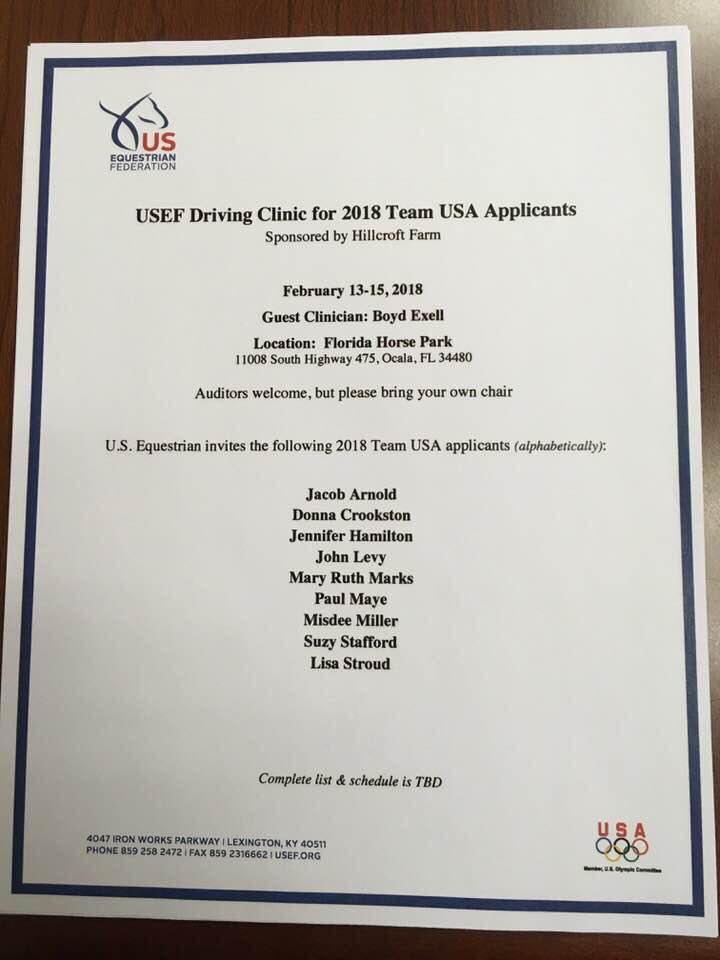Top Teaching Takeaways and Videos From Combined Driving World Champion Boyd Exell
Monday, February 19, 2018 | Mary Phelps

Story, photos & videos by Jennifer M. Keeler for HorsesDaily Combined Driving News

Boyd Exell ©Mary Phelps 2017
Australian driver Boyd Exell’s international competition resume, which includes four World Championships and eight FEI World Cup titles, is unprecedented in the combined driving world.
Thanks to the generosity of James and Misdee Miller of Hillcroft Farm, some of America’s top drivers had the incredible opportunity to work with Exell during a U.S. Equestrian Federation Combined Driving Program for Elite Athletes, held February 13-15, 2018 in Ocala.
In addition to the 10 High Performance drivers participating, the public was invited to audit the sessions for free, providing an invaluable learning opportunity for everyone.
Over three days of intensive training, participants worked on dressage, marathon hazards, and cones on the grounds of the Florida Horse Park.
Here are some of our top takeaways from Exell:
- On dressage: “It’s not about the quick fix: the right bit, the right rein slot, the right curb chain length, whatever. It has to be about correct fundamentals. As a driver you need to be educated as to why things are the way they are, and how they can be changed. I want you to learn something.” Watch Exell discuss a new approach to dressage with Donna Crookston.
- On contact: “In an ideal world, you don’t want to push them into the contact. You also don’t want to pull them into it. You want them to take you to the right contact.”
- On finding the right bit: “With bits, the first rule is to determine if the horse is happy with the mouthpiece. If he’s 80 percent happy, it may not be the ‘perfect’ bit, but it’s enough to work with. Then you move on to making a decision about the cheekpiece.” Watch Exell talk more about bits.
- On collection, part 1: “You can’t be working so hard to manufacture the movement. You’ve got to set the horse up to do the movements naturally – the horse should do 70 to 80 percent of it himself. As a driver you’re trying too hard because you want to do well. Remember, less is more.”
- On collection, part 2: “Collection should look like the horse is climbing an invisible mountain. It’s all about balance and self-carriage.”
- On collection, part 3: “A common mistake is blocking the collection. It must be forward, and not restricted by the driver. If I hire someone to mow my grass, I don’t expect them to run, but to walk with purpose to get the job done – always forward progress.”
- On practicing the start of the dressage test: “People don’t realize how important those first four movements are. At first glance, they may seem relatively simple. But there is actually so much involved in there, and it sets the tone for the rest of the test. As a result, drivers don’t practice it nearly enough.”
Watch Nifty Hamilton practice the opening sequence of the FEI 3* Advanced test.
When training dressage movements, Exell stressed that “Quality always comes first, then accuracy.”
In the FEI Adnvanced dressage test for single horses, the leg yeild has been added as well as canter work.
- Schooling the leg yield, part 1: “On the test sheet, what is the descriptive wording for leg yield? ‘Slight inside flexion, horse parallel to the centerline.’ But everybody wants the horse to start out with the shoulder, and it’s not correct. That’s why the movement goes to P and not to E, because it’s easy to go out with the shoulder on a short diagonal. But to do it on the longer diagonal, really stepping over with the hind leg, is harder. You can’t bully it.”
- Schooling the leg yield, part 2: “The key is to be parallel to the centerline. If they’re square to the centerline and you ask, then the movement starts with the hind leg. But if you have them crooked and say, ‘more’, they just go out with the shoulder. The key is to keep going back to being parallel on the centerline, and timing of the aids. It’s not a difficult movement, but people overdrive it and try too hard.” Watch Jacob Arnold practice the leg yield.
- Schooling the leg yield, part 3: “What is your system? You must have a system or a specific technique. You can fumble your way through a movement a few times and think it’s pretty good, but that’s not a foundation. Outside rein, step over, leave it alone. Outside rein, flexion inside, maybe a bit of whip if he doesn’t respond, leave it alone. Repeat, leave him alone. Decide on a technique, one technique, and stick to it. Don’t get wishy-washy and then the horse starts guessing. You say to the horse, ‘this is what I want, and do it.’”
When working with teams like Lisa Stroud’s in dressage, Exell made multiple adjustments to harness to try to figure out a way to help each horse in the turnout work at their best.
The repeated changes illustrated how even the smallest adjustment to a single horse could affect the performance of the entire team. “You’re only as good or as fast as the weakest or slowest member of your team,” he explained.
On marathon: “It’s not about speed, it’s about control. So many drivers think that being fastest is about running in the hazard. But it’s actually about control.”
On the final day, some drivers chose to work over a challenging cones course. Watch as Exell asks Misdee Wrigley Miller to utilize a shoulder-in to step-over cones in warmup , followed by tackling the entire course.

